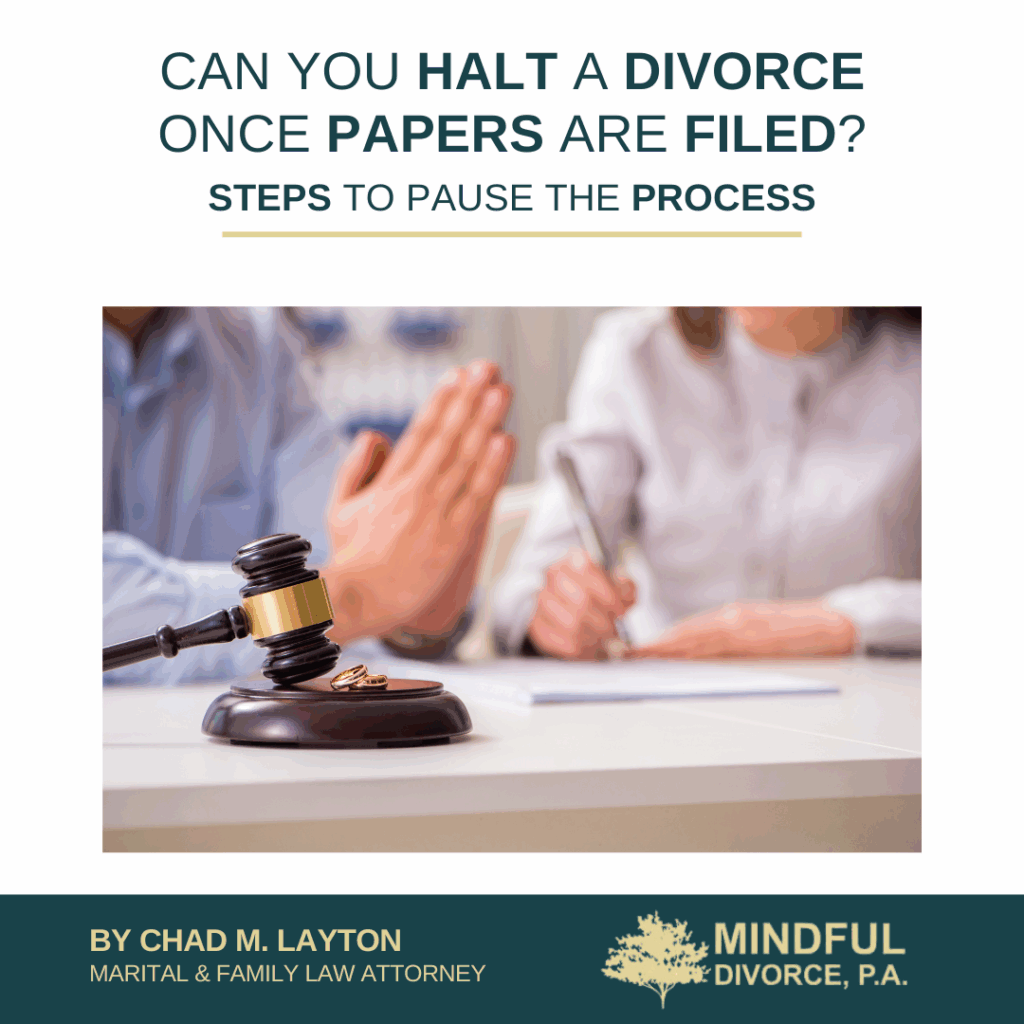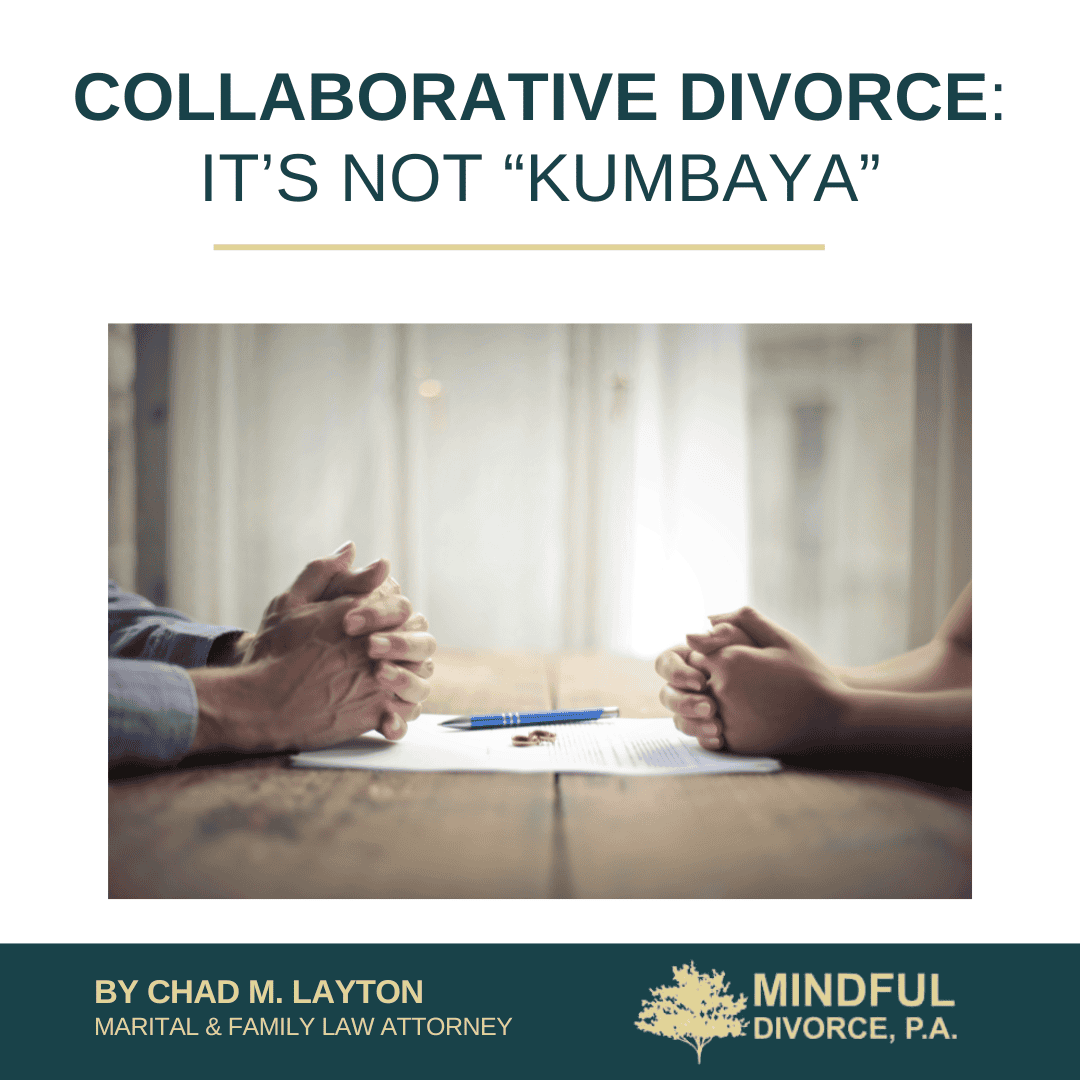
Filing for divorce often feels final, yet doubts can surface after the paperwork leaves your hands. Even when emotions run high, Florida courts give couples room to slow down, rethink, or stop the case if both spouses agree.
At Mindful Divorce, P.A., we believe a clear fee schedule and plain-language guidance lighten the load during these hard weeks. This article explains how you can pause or end a pending divorce, the limits of those options, and the value of having steady legal support while you decide what comes next.
Initial Steps and Considerations When Filing for Divorce
Before any pause is possible, the case must start on solid legal ground. Florida requires at least one spouse to live in the state for a minimum of six months before filing. Because Florida is a no-fault state, the petition only needs to say the marriage is “irretrievably broken.” Either partner may file, and the other spouse has twenty days to answer once served with the papers.
Most new filings move through these early tasks:
- Draft and file a Petition for Dissolution with the circuit court in the proper county.
- Pay the filing fee or request a fee waiver if your income qualifies.
- Serve the petition through a process server or sheriff so the court obtains proof of delivery.
- Exchange a financial affidavit within forty-five days, laying out income, debts, and assets.
Only after this framework is in place can either party explore ways to hit pause.
Options for Pausing or Stopping a Divorce
Florida procedure offers a handful of methods to put the brakes on a pending divorce. Which path works best hinges on timing, whether the other spouse filed a counter-petition, and how much certainty both parties have about reconciliation.
Notice of Voluntary Dismissal
If the spouse who filed the original petition has second thoughts, a Notice of Voluntary Dismissal closes the case right away. When a counter-petition exists, that partner must dismiss as well, or the divorce will roll forward under their pleading. After dismissal, any future divorce starts from scratch, including new filing fees and a new case number. Copies of the notice must reach the clerk, the other spouse, and every attorney involved to make the dismissal stick.
Motion to Abate
A Motion to Abate places the action on hold rather than erasing it. Courts often grant a pause for sixty to ninety days, long enough for marriage counseling or breathing room. Either party may ask for an extension of progress toward reconciliation that looks promising. Should talks fall apart, one quick filing (usually called a Motion to Continue) wakes the case and keeps earlier pleadings, discovery, and fees intact.
Inaction and Dismissal
Florida clerks track cases for inactivity. If the petitioner ignores court notices, misses deadlines, and takes no steps for many months, the judge may dismiss the matter without prejudice. While this passive route does pause the divorce, it risks confusion over property or temporary orders and leaves neither spouse with clear closure.
Placing the Case on Inactive Status
Some circuits allow couples to stipulate that the file moves to “inactive” status. Both parties sign a short agreement, and the clerk suspends all hearings and deadlines for a set time, often six months. During that span:
| Method | Does the Case Remain Open? | Typical Length | Refiling Needed if Divorce Restarts? |
| Voluntary Dismissal | No | Permanent until a new petition is filed | Yes |
| Motion to Abate | Yes | 60 to 90 days, extensions allowed | No |
| Inactive Status Stipulation | Yes | Up to one year in many circuits | No |
| Inaction by Both Parties | The clerk dismissed after a long silence | Varies by county docket rules | Yes |
Once the inactive window closes, either spouse may file a simple motion to bring the case back to the active calendar.
Considerations When Reconciling
Pressing pause has value only if both partners genuinely want to test reconciliation. Honest conversation should come first, followed by practical steps such as counseling or mediation sessions aimed at the core marital issues.
- Talk openly about finances, parenting, or trust concerns that fueled the filing.
- Set small milestones, like attending three counseling visits, before deciding on dismissal or continuation.
- Write down any agreements on bills, living arrangements, or time with children during the pause to avoid later disputes.
Putting those promises in writing, even informally, creates a clear record if the case revives and helps the court see the good-faith effort made by both spouses.
What Happens If Reconciliation Fails?
Some couples find that a brief pause confirms they still need to dissolve the marriage. If pleadings were dismissed, the petitioner files a fresh case. Where the matter was only abated, a motion to lift the stay returns the file to the judge’s docket. New financial updates may be required, and any lapsed temporary orders, such as child support or exclusive use of the home, might need renewal.
Early legal guidance limits delays. A lawyer can update discovery responses, secure new hearing dates, and keep the case moving without the frustration of starting the process all over again.
When Can a Divorce Not Be Stopped?
Once the judge signs the final judgment and the clerk stamps it, the marriage is legally over. At that stage, no motion can “undo” the divorce. Former spouses who reunite would need to remarry to regain their legal status as husband and wife. Likewise, if one partner refuses to dismiss or abate, the court will let the divorce proceed. Florida will not force anyone to stay married.
Need Help with Your Divorce? Contact Us Today
If you are weighing a pause or complete stop to your divorce, Mindful Divorce, P.A., is ready to help. Our team offers calm, straightforward guidance and transparent fixed fees so money surprises do not add to the stress. Call us at 561-537-8227 or visit our Contact Us page to set up a time to talk. Together, we can chart the next step that protects your peace of mind and keeps your future firmly in focus.



